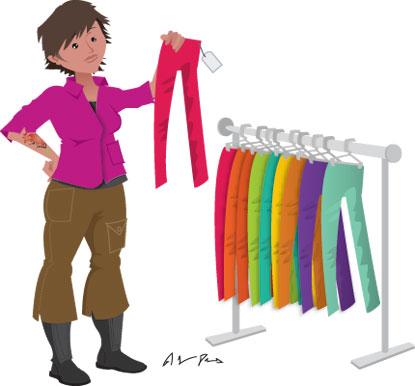Startup Technology Choices

Been called by a new food co-op for advice recently? The number of startup food cooperatives is swelling, and with it, the ranks of cooperative advisors.
At Food Co-op Initiative, when we're asked for advice, what comes to mind may be what worked for us in a similar situation. After all, what we're looking for are those elusive "best practices" that work and that can be passed on.
What's easy to overlook, however, is how important the specific context was to our previous success with that strategy. Context could include the people we had on our team and the skills they brought with them—not to mention the relationships they had in the community.
Context could also include whether our team included an experienced staff of professional grocers and marketers, or whether we were citizens organizing our first business venture. Even with the same team, we might pursue a completely different strategy for an identical challenge, depending on whether we had $500,000 on hand or had only $50,000. Context matters.
Consequently, when we get a call from a new food co-op, it's not always easy to see the specific context over the phone. How, then, can we ensure that we're giving helpful advice?
There are two approaches we might consider:
We could invest in research such as interviews and surveys to begin mapping out contexts with more specificity. By rigorously collecting data over time, we could draw a more detailed picture of the context underlying startup decisions and outcomes. This would allow us to have greater confidence that the advice we're giving is more correct in the situation—or at least allow us to say, "I don't know," with real certainty.
On the other hand, rather than specific advice, we could provide questioners with tools to learn how to answer their own questions by thinking more critically about their context and the options they might pursue.
If anyone has an extra $25,000 check lying around, let's get together and talk about that first approach. But for now, I want to focus on the second: providing tools that help startups think more critically.
I employed that second strategy recently in an online presentation for startups about selecting new software for the organizing stage. As both a grassroots organizer and software developer, I easily could have said, "Use Donner for X, Blitzen for Y," and so on, and that might even have been what some of the attendees wanted to hear. But ignoring the context would produce good advice at about the same rate that a broken clock gives the correct time. Some of those context factors are:
- The technical capacity of the organizing group
- The amount of money available
- The intended lifespan of the solution
Instead, my talk focused on examining the problem domain: what are the specific goals of an organizing group for which it requires software systems? I divided those goals into four categories:
- Engagement
- Institutional knowledge
- Collaboration
- Self-service
and then broke those down into specific needs and uses in each of these goal categories.
Then I defined a set of criteria that could be applied to any candidate software, in categories such as cost, utility, lifespan, and training requirements. I worked through an example during the presentation, comparing a spreadsheet for keeping membership records versus an open-source constituency relationship management package like CiviCRM.
I confess, I couldn't resist recommending a few strong options for consideration—give the people what they want, after all. But I hope those options are rigorously considered and compared rather than adopted without proper regard for looking before one leaps.
It's a big country, and every new food co-op is organized around the unique resources, capacities, and opportunities of its community. As Adam Schwartz says, "If you've seen one co-op, you've seen one co-op." Rather than shop off the rack for one-size-fits-all solutions, I recommend we seek techniques, such as explicit criteria, critical thinking, and technology—including open-source software—that can be custom-tailored for a fit as snug and unique as the co-op wearing them.







